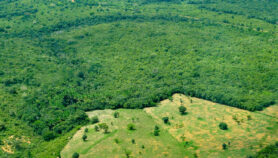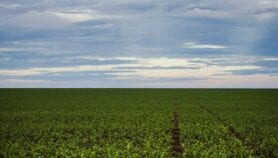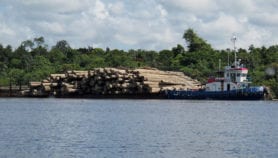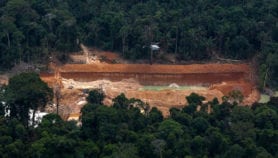By: Nicky Lewis
Send to a friend
The details you provide on this page will not be used to send unsolicited email, and will not be sold to a 3rd party. See privacy policy.
 |
Carbon-trading deals involving forestry projects in developing countries could reduce poverty at the same time as they offer an inexpensive way to off-set carbon dioxide emissions, according to a new report.
Under the clean development mechanism (CDM) of the Kyoto Protocol, industrialised nations are allowed to meet part of their carbon emission reduction commitments by carrying out reforestation and clean energy projects in developing countries.
The use of forests to reduce emissions is not only financially viable, but could also bring significant benefits to the local communities involved, say the authors of Forest Carbon and Local Livelihoods: assessment of opportunities and policy recommendations.
The report, based on evidence from more than 20 studies of existing forest carbon projects, was released today (18 October) by the Centre for International Forestry Research (CIFOR) in Indonesia and the US-based non-profit organisation, Forest Trends.
"Our report shows for the first time that deals between industry and community tree growers may be one of the least expensive ways for companies to off-set their carbon emissions," says Sara Scherr, senior policy analyst at Forest Trends, and co-author of the report.
As well as sequestering carbon — locking up carbon dioxide to prevent it from escaping into the atmosphere — the study concludes that forestry projects would have several additional advantages, including the recovery of forest habitats and production of food crops.
"[They] would bring social, economic, and local environmental benefits to hundreds of thousands, and potentially millions, of poor rural people in the developing world," says David Kaimowitz, director general of CIFOR.
The authors estimate that community-based projects could sell carbon credits at a market price of US$15-20 per ton of sequestered carbon. Developing nations are already being encouraged to engage in the global carbon market through a Community Development Carbon Fund that was launched in September at the World Summit on Sustainable Development (see Community carbon fund to help poor countries, 9 September 2002).
Considerable controversy surrounds the social impact of forest carbon trading, however, and some community groups have strongly opposed the inclusion of carbon sinks in the CDM. For example, in a declaration made in 2000, the Indigenous Peoples on Climate Change — an international group of over 30 indigenous organisations — stated "sinks in the CDM would constitute a worldwide strategy for expropriating our lands and territories and violating our fundamental rights that would culminate in a new form of colonialism."
Despite these criticisms, the authors contend that carbon emission trading under the CDM presents an important opportunity to sustain forests and their resources. And they argue that community tree-planting projects could offer "socially responsible" carbon credits to industrialised nations.
They urge delegates at next week’s climate change convention in New Delhi to revise carbon-trading rules and ensure that poor countries become "real players" in climate change negotiations. In particular, the report recommends that definitions, regulations and criteria for CDM forest contributions are specified, and that delegates commit to strengthening capacity-building and advisory services for investors, communities and intermediaries.
The authors also stress that most developing countries will need changes in policy — in terms of attracting investors, securing local rights, reducing transaction costs, and integrating projects into national frameworks — to enable forest carbon projects to operate successfully.
But many are more doubtful about the value of carbon sinks, saying that while changes in land use are known to influence the land-based carbon sink, its mechanism is not well understood (see Uncertainty looms over promise of carbon sinks, 8 August 2002). The extent of the potential contribution of sinks to mitigating climate change also remains uncertain, with some predictions suggesting that manipulation of the land-based sink should only be looked upon as a short-term option.
The findings of a European research project investigating forests sinks have echoed the need for a cautious approach. While preliminary results from the CarboEurope initiative suggest that 10 to 30 per cent of the European Union’s industrial emissions are being absorbed, they also point to the risk that this sink capacity could be reduced in a changing climate.
© SciDev.Net 2002
Related policy brief:
Carbon sinks: what are they and why are they important?
See also:
Forest Carbon and Local Livelihoods: assessment of opportunities and policy recommendations ![]()
![]()
![]()
Photo credit: IFPRI













